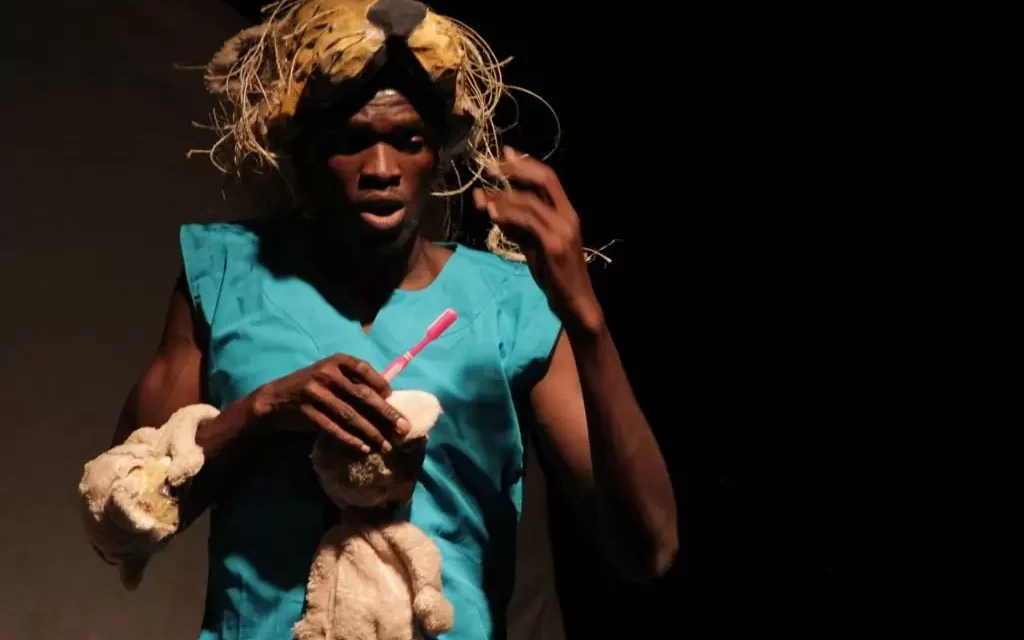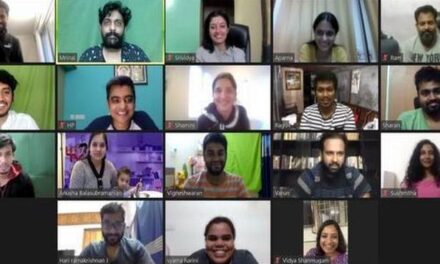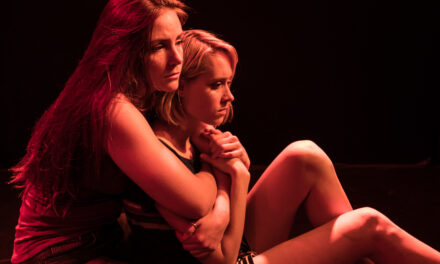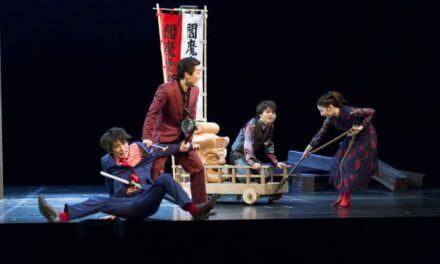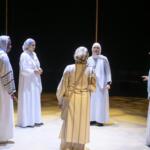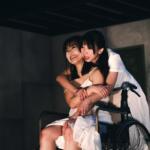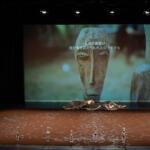The Kampala International Theatre Festival (KITF) will open on November 22 in Uganda. This will be the festival’s 10th edition since their first one ten years ago.
On September 26, 2014, Jean Paul Delore’s Ster City premiered at the National Theatre at 5 p.m. It was a Wednesday.
The play follows an interaction between two South African actors and a musician talking about the history of South Africa and their dreams. The play pretty much takes place at SterLand Cinema, an old and abandoned movie theatre in Johannesburg. The luxurious complex was a white-only theatre in the 1960s through the 1980s, yet now it is closed and devastated, but all around, life bustles with traffic, trade, and movement.
The play opened the first edition of the Kampala International Theatre Festival at the National Theatre. It was the first time Uganda was hosting an international theatre festival.
“The first KITF came out of the labs we did with Sundance Institute. Sundance doesn’t produce new works; it, however, supports people producing. We had done a number of labs, and people were doing work without showcasing. We had to find a way of making sure Sundance can help to present without being at the forefront,” says Deborah Asiimwe.
Asiimwe is the festival founder who, at the time of co-founding KITF alongside Bayimba Foundation’s Faisal Kiwewa, was working with the Sundance Institute.
The first edition, according to Asiimwe, brought together productions from East African countries where Sundance had a presence, such as Uganda, Kenya, Tanzania, Rwanda, and Ethiopia, among others.
The rich line-up involved plays such as Desperate to Fight, Black Maria, DJ Lwanda, Strings, and Africa Kills Her Sun, among others.
The journey had started.
Kampala International Theatre Festival: The Beginning
But this journey started when Asiimwe attended Bayimba and noticed many things were happening, such as fashion, music, dance, and all the different art practices.
“I had loved what Bayimba was doing with the festival—we thought we could have theatre within Bayimba. But the more conversations we had, the more we realised we needed an independent festival,” she says.
After the first edition, many playwrights and directors from other countries outside the East African region or without Sundance presence started inquiring about ways of taking part in the festival.
And indeed, they applied and submitted plays for the next edition, prompting the organisers to open the festival up.
Over the course of the past nine years, KITF has persevered through thick and thin, yet, continuously, they have been a solo international festival in the region.
However, this period has come with challenges, such as the COVID-19 pandemic, which devastated the arts generally.
Sundance closed off the theatre component and a number of other disciplines to concentrate on the film festival.
“Funding art is generally hard; it’s not just theatre alone. We are donor-supported, we have had in kind support, and we have created local and international relationships. Basically, my work is to look for more funding,” Asiimwe says.
Things usually get tricky for artists in countries such as Uganda; the reliance on foreign funding always leaves them bare when the funders’ interest changes. It is even harder because such arts as theatre, dance, visual art, or film get little to no support locally.
“Theatre is very interesting, but it is not loud. Most local companies support the arts where their products are consumed. The theatre, for the most part, makes you watch, and after that, you have to think. Traditionally, most companies supporting the arts have been beverages, and for them, theatre is not it,” she says.
Tricky funding
But she also says that the political climate in Uganda has forced some sponsors to censor themselves. For instance, theatre naturally questions and criticises society; corporate companies in Uganda are not ready to side with shows that talk about the things theatre addresses.
“Most companies have not positioned themselves for theatre; it is music and sports that serve their purpose perfectly,” Asiimwe says, adding that theatre has to find a way of getting corporate companies to see them.
With theatre, funding and agenda always go hand in hand; many have turned away funders that want them to deliver a certain message: “We have to evaluate our values. Are we working for their approval?”
Asiimwe reveals that today, young people are writing about many things that can’t be caged.
“We have applied for grants and found ourselves being geared towards certain topics, and we want to tell stories that our people care about,” Asiimwe says.
Uganda’s performing industry has always had divisions ranging from the way it’s delivered to where it is presented. The divisions are the same across the board, uptown and downtown.
Misunderstood theatre
From music, film, and theatre, sophisticated art that is minimalistic, true to the rules, and usually delivered according to the book is considered uptown, affluent, and, for some, complicated. Then there is another section, usually comical, heavily improvised, bloated casts and presented in local languages.
The theatre that’s predominantly English is what is mainly curated at the festival.
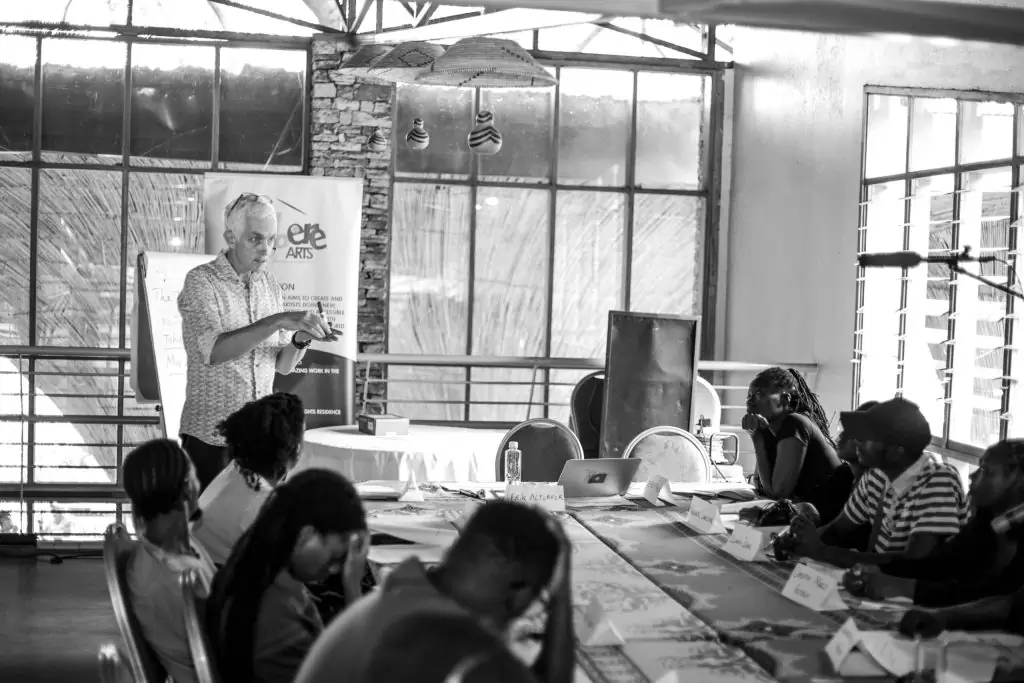
Kampala International Theatre features performances and masterclasses by artists and facilitators from across the world (Photo: KITF Website)
“What has been happening is that the audience associates good theatre with English,” Asiimwe says.
Of course, the audience that goes to the other spaces, considered downtown, is usually looking for a good time. “They don’t want to come and engage in deep theatre, then leave and have to think about it. They want a stress reliever, and their producers know this.”
With much of this theatre delivered in indigenous languages, it is not surprising that it is more popular than that at KITF.
To address such issues, Asiimwe says, Tebere Foundation has worked on workshopping many vernacular stories. But we are also working on ways to show people that theatre is not confined to a box but can happen anywhere.
The festival has tried to place theatre in as many places over the years; for instance, in 2015, one of the productions, Kushtrim Mehmeti’s Waiting for the Train, entirely took place on the National Theatre stage, with both the audience and actors on the same stage.
The play from Kosovo was about two people waiting for the train. They are very different from each other but have the same intentions: to leave the country they believe has failed them.
According to Asiimwe, most of the shows people have enjoyed the most were those that fused theatre with multimedia, such as photography, video, and music.
Barzarh from Lebanon was one of such shows.
Asiimwe says that anything that seemed different from what people are used to or those where they were involved hit with the audience.
During the 2017 show, for instance, the play The State was staged. The performance was just the text, with the audience reading it.
Too many spaces
When the festival was first established, Asiimwe says they wanted everything to be at the National Theatre. However, at the time, the theatre struggled with programming and booking, forcing the festival to move to Ndere Centre, The Square, Uganda Museum, and back to Ndere Centre, who are now partners of the festival.
“The theatre at that time had many issues; they would create a mess and leave artists to tussle it out. We humbly moved because we noticed theatre can’t be in one place,” Asiimwe says.
The different locations the festival have challenged them to programme differently as well as see theatre in a different light.
For instance, at the Uganda Museum, the opening show was in the old car park, which neither has a stage, platform, nor audience space.
When the festival took place at The Square, it was a new working space where performance spaces were improvised. The Ndere Centre on the other side offered an auditorium, but other performance spaces were improvised.
Working away from the theatre, however, helped them stage some of the most intimate performances in smaller spaces.
For example, Rehema Nanfuka’s performance of Doreen Baingana’s Tropical Fish in the Ndere Centre’s conference room remained one of the most memorable shows the year it was programmed.
“We have noticed that different spaces attract different audiences, so this year we are being intentional about the different spaces.”
This year’s edition goes back to the National Theatre for the first time since 2015; however, other programmes will be at the Ndere Centre and Motiv.
Tebere Arts Foundation and Kampala International Theatre Festival
In 2017, Asiimwe was faced with a crisis when she learned that they were financially short. These were a few weeks before the festival; Bayimba couldn’t support the festival.
“We had a conversation about them producing one edition and me producing the next. But to do that, I needed an organisation to do this,” she says.
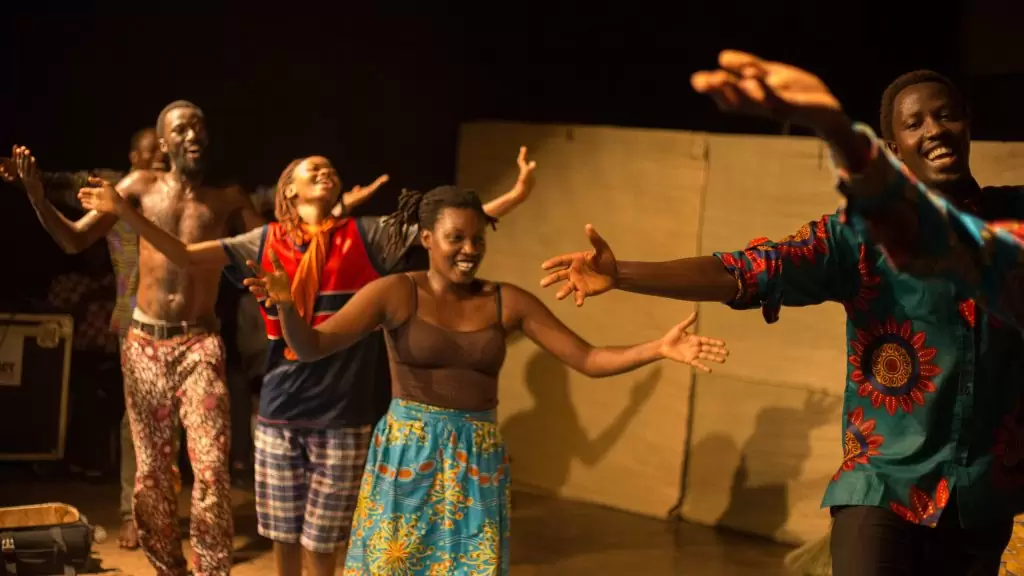
This year KITF goes back to the National Theatre with other programmes at the Ndere Centre and Motiv.
That was the birth of Tebere Arts Foundation, a brainchild of Asiimwe, Kenneth Kimuli Pablo, and Gladys Oyenbot. She says they started Tebere because there was a need. The main role of the foundation is to create and support platforms where new and exciting works of art are created, produced, and presented.
“We started Tebere in 2018, but we produced our first KITF in 2019; we also did our first independent show, Red Hills, in 2019. We have tried to produce a show every year.”
Tebere has produced shows such as Red Hills, Tropical Fish, and Charles Mulekwa’s latest outing, Man to Man. For many of these shows, Asiimwe says they have been part of the development process as well.
Theatre and policy, and producing a festival
In 2018, after Bobi Wine’s arrest during a campaign in Arua, the arts in Uganda were weaponized. Poet and performer Kagayi Ngobi had a number of his shows at the National Theatre banned; the Amakula Film Festival had some documentary films denied screening licences; and in 2020, a set of regulations were rumoured for the creative industry.
Even when all the existing regulations were fashioned for the arts, rarely did they come for theatre until 2022. Days before the opening, the festival was thrown into balance when the Media Council threatened to shut them down for failing to classify their plays.
“I feel like our government should be able to regulate something they support. Regulating something you don’t support or understand is dangerous,” she says.
“Last year, I received a letter from the Media Council threatening to shut down the festival a week before it happened. I hated the fact that these laws have existed but are not talked about or sensitized. I went over to their offices, and I was given forms that had nothing to do with theatre; they were all about film.”
At the time, she says she made a pledge to help them sensitise theatre people about the laws, but nothing has happened, and the laws have not been used on other people producing theatre.
“We have worked with them for past shows, but it’s clear they don’t understand how theatre works. The money they charge for each play is insane,” she says.
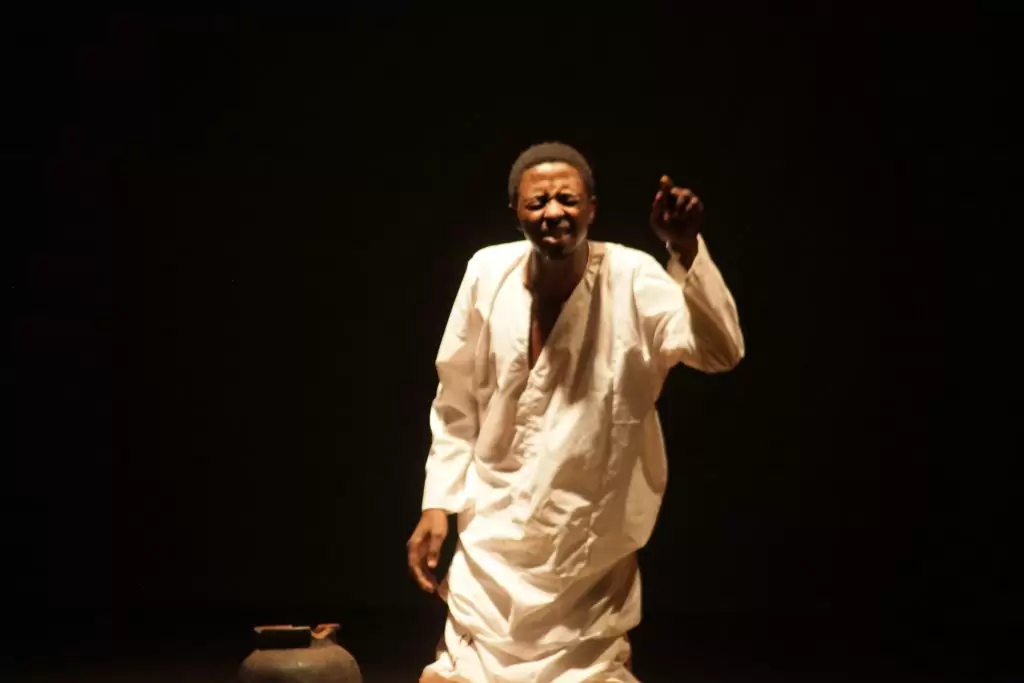
Peter Kagayi performed his The Audience Must Say Amen at Kampala International Theatre Festival in 2016
The Media Council is in charge of classifying productions before they are taken for public exhibition. For films, Ugandan films pay about $50 for classification; international films pay $150.
Using the same script of film to charge and classify plays means a production from Kenya or Rwanda acted by Ugandans will pay $150, but in the same way, a minimalist play such as The State, which only requires a box and text, or Esosa E’s The Woman That Would Be King, which is one woman and her scarf, becomes expensive to stage because of the $150 classification fee.
For a self-funded project, there needs to be a conversation between policymakers and artists; there seems to be more bodies taking away from artists than those giving artists,” she says.
Of course, like all art disciplines, theatre suffered COVID-19 setbacks, which Asiimwe says the industry is still recovering from: “People are yet to get into the place of stability to create. We lost funding, but artists finding themselves in communities like Yenze have created opportunities that allow us to rise above the water,” she says.
Yenze is a theatre consortium that provides training in acting, voice, and movement. Over the past few years, a number of theatre initiatives have come up to help theatre makers in different fields.
As a festival, the biggest challenge could be the turnout. Most of the people that come for the festival are expatriates and a few of Kampala’s affluent. Asiimwe says that as much as they appreciate this audience, they want to be more inclusive.
“At times we wish we could have those shows with bigger casts, the ones many Ugandans enjoy, but finances can’t allow us,” she says.
On a good note, though, the festival’s consistency, according to Asiimwe, has seen an improvement in the scripts they receive in submissions.
“In 2015, we would receive treatments as scripts, but people have not only improved but have learned. They also attend the festival and know what we are looking for. If you are to compare Kagayi’s shows now and then, there is growth.”
This article appeared in The African Theatre Magazine on November 10, 2023, and has been reposted with permission. To read the original article, please click here.
This post was written by the author in their personal capacity.The opinions expressed in this article are the author’s own and do not reflect the view of The Theatre Times, their staff or collaborators.
This post was written by Kaggwa Andrew Mayiga.
The views expressed here belong to the author and do not necessarily reflect our views and opinions.

